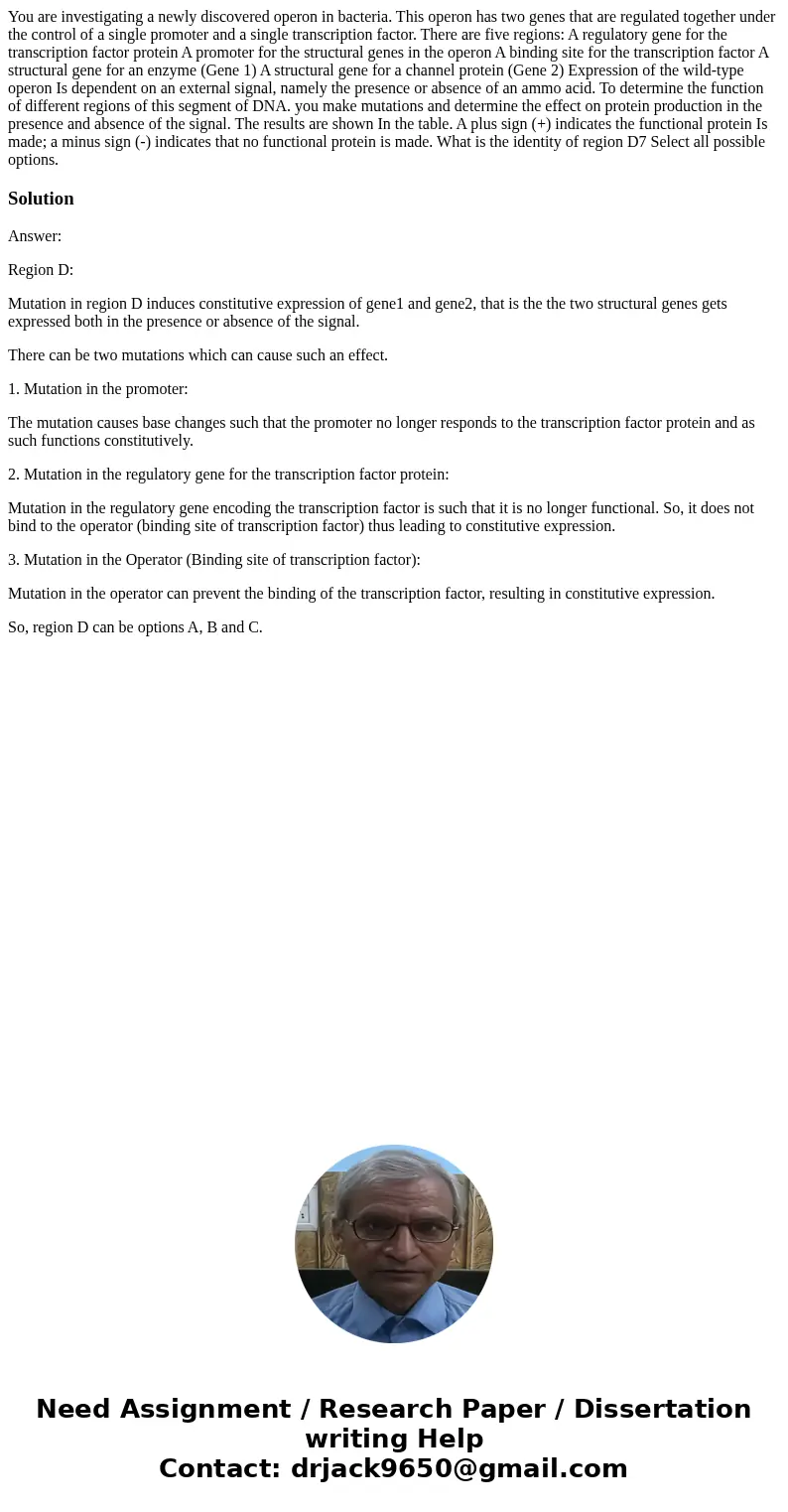You are investigating a newly discovered operon in bacteria
Solution
Answer:
Region D:
Mutation in region D induces constitutive expression of gene1 and gene2, that is the the two structural genes gets expressed both in the presence or absence of the signal.
There can be two mutations which can cause such an effect.
1. Mutation in the promoter:
The mutation causes base changes such that the promoter no longer responds to the transcription factor protein and as such functions constitutively.
2. Mutation in the regulatory gene for the transcription factor protein:
Mutation in the regulatory gene encoding the transcription factor is such that it is no longer functional. So, it does not bind to the operator (binding site of transcription factor) thus leading to constitutive expression.
3. Mutation in the Operator (Binding site of transcription factor):
Mutation in the operator can prevent the binding of the transcription factor, resulting in constitutive expression.
So, region D can be options A, B and C.

 Homework Sourse
Homework Sourse